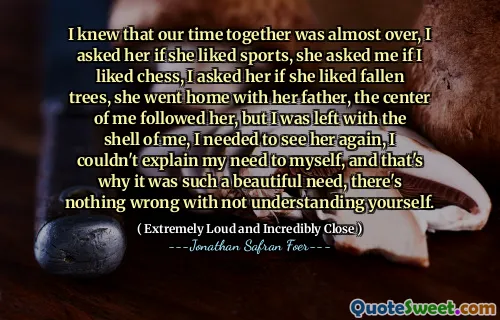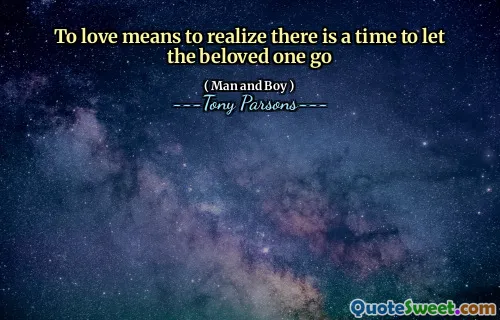We were trying to make our lives easier, trying, with all our rules, to make life effortless. But a friction began to arise between Nothing and Something, in the morning the Nothing vase cast a Something shadow, like the memory of someone you've lost, what can you say about that, at night the Nothing light spilled from the guest room spilled under the Nothing door and stained the Something hallway, there's nothing to say.
In Jonathan Safran Foer's "Extremely Loud and Incredibly Close," the contrast between "Nothing" and "Something" highlights the complexities of human existence. The narrative explores how our attempts to simplify life through established rules can lead to unforeseen friction. This tension manifests through imagery, such as the Nothing vase casting a Something shadow, which evokes feelings of loss and the lingering presence of memories associated with those we have lost.
The text reflects on the struggle to find meaning amid this duality. At night, the image of Nothing light creeping under the door illustrates how shadows of our experiences and emotions continue to affect us, permeating into our lives. Through this lens, Foer invites readers to contemplate the ineffable aspects of grief and the challenges of articulating our feelings. Ultimately, the juxtaposition serves as a reminder that life is filled with both absence and presence, and finding balance amidst this contradiction can be profoundly difficult.






